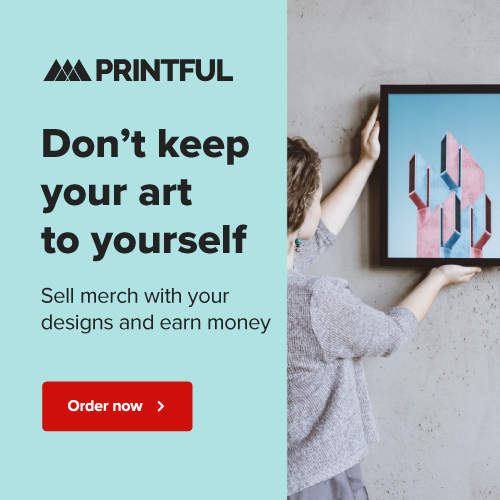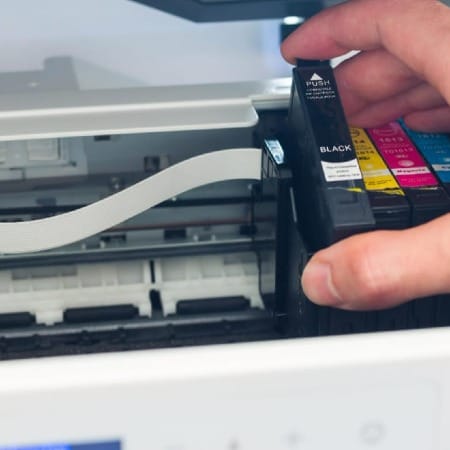Introduction
In the digital age, photographers have more opportunities than ever to monetize their craft. While some might focus on stock photography or client work, selling photo prints offers a tangible and artistic way to generate income from your photography. There's something uniquely rewarding about seeing your work displayed in homes, offices, or galleries, knowing that people appreciate it enough to pay for a physical representation of your art.
For photographers, turning photos into prints can be a fulfilling and profitable venture. Whether you shoot stunning landscapes, striking portraits, or abstract compositions, there’s a market for high-quality, beautifully printed photography. Many art lovers and collectors prefer physical prints over digital files because they provide a personal and lasting connection to the art. Plus, as a photographer, selling prints allows you to extend the lifecycle of your images, making them a long-term source of income.
Selling photo prints isn’t just limited to traditional framed images either. You can print your photos on a variety of mediums, from canvases to fine art paper, or even on products like calendars, phone cases, and apparel. This versatility means that no matter your niche or photography style, there are multiple avenues to explore when selling prints.
However, to succeed in this business, it’s crucial to approach it strategically. From selecting the right images to deciding on printing methods, pricing, and platforms, the process requires careful planning. This guide will walk you through the essential steps, from preparing your portfolio to promoting and fulfilling orders, so you can turn your passion for photography into a thriving print business. Whether you're just starting or looking to expand your income streams, this step-by-step guide will help you get started on your journey to making money by selling photo prints.
Step 1: Prepare Your Portfolio
When it comes to selling photo prints, the first and most critical step is to prepare a portfolio that showcases your best work. Your portfolio is the foundation of your success, as it represents your style, creativity, and technical skills to potential buyers. Selecting the right images and ensuring they are print-ready will not only attract customers but also increase your chances of making repeat sales. Here’s how to approach this step effectively.
Curate Your Best Work
Not every photo in your collection is suited for print sales, so the curation process is essential. Start by reviewing your entire body of work and picking the images that stand out the most. These should be the photographs that not only demonstrate your artistic vision but also resonate with a broad audience. Popular categories for selling photo prints include landscapes, cityscapes, nature, wildlife, abstract images, and portraits. You might also find that photos with strong emotional appeal, vibrant colors, or unique perspectives tend to sell well.

Keep in mind that variety is important. Offering different genres, themes, or moods in your portfolio will increase your chances of appealing to various tastes and preferences. However, while variety is good, make sure there is consistency in the quality and style of your work. Consistency in your portfolio helps build a recognizable brand that potential buyers can trust.
Edit and Refine Your Images
Once you’ve curated a selection of your best work, the next step is to ensure that each photo is print-ready. Printing requires high-resolution images to maintain quality, especially for large formats like posters or canvas prints. As a general rule, photos should be at least 300 DPI (dots per inch) to produce a sharp, professional-looking print.
This is also the time to do any necessary editing. Adjust the exposure, colors, contrast, and sharpness to ensure that each image looks its best when printed. Remember, what looks great on a digital screen might not translate perfectly to print, so pay attention to fine details like lighting and shadowing. Use professional editing software such as Adobe Photoshop or Lightroom to make any final adjustments and export your images in the highest possible quality.
Test Your Prints
Before offering your photos for sale, it’s wise to test-print a few of them. This allows you to see firsthand how the images will look in physical form and to ensure that they meet your standards for quality. Different printers and materials can affect how your images appear, so by testing prints, you can fine-tune the process and make necessary adjustments before you begin selling photo prints to customers.
Consider Image Variety and Print Mediums
Another factor to consider when preparing your portfolio is the variety of print mediums you want to offer. While paper prints are standard, many buyers are interested in other formats, such as canvas, metal, or acrylic prints. Each medium can offer a different aesthetic, and certain images may look better on one material than another. For example, landscapes may have more depth and vibrancy on a glossy canvas, while fine art portraits might shine on matte fine art paper.
By carefully curating your portfolio, editing and refining your images, and offering a variety of print mediums, you’ll be well-prepared to start selling photo prints that attract and inspire buyers.
Step 2: Choose the Right Printing Methods
After preparing your portfolio, the next crucial step in selling photo prints is to choose the right printing methods. The quality of your prints will directly impact how your work is perceived by buyers, so it’s important to understand the options available and choose what works best for your photography style, target audience, and budget. In this step, we’ll explore the different printing methods and how to select the right one for your business.
Print-on-Demand vs. Traditional Printing
One of the first decisions you need to make is whether to use a print-on-demand service or traditional printing. Each option has its own advantages and disadvantages, depending on your goals and business model.
Print-on-Demand (POD): With print-on-demand services, you don’t need to invest in inventory upfront. The process is simple: when a customer orders a print, the service prints and ships it directly to them. Popular POD platforms include Printful, Redbubble, Society6, and Fine Art America. This method eliminates the need for storage and handling, allowing you to focus on promoting and selling your work. However, the downside is that POD services often take a percentage of the sale, and you may have less control over print quality and customization.

Traditional Printing: With traditional printing, you have full control over the printing process. You can select a local print shop or a professional fine art printing service to produce your prints. This method ensures you have more oversight of the quality and materials used, and you can offer limited editions or hand-signed prints, which can add value to your products. The downside is that you’ll need to invest in printing upfront, store the inventory, and handle shipping yourself.
Both methods have their place in selling photo prints, so it’s essential to weigh the pros and cons based on your goals, budget, and how hands-on you want to be with the production process.
Choosing the Right Paper and Print Quality
Whether you choose print-on-demand or traditional printing, the type of paper and print quality you select will significantly affect how your prints look and feel. Different types of paper and materials can enhance or detract from the overall presentation of your work, so it’s important to understand your options.
Fine Art Paper: This is the gold standard for high-end photography prints. Fine art paper, such as Hahnemühle or Canson, is designed to offer superior color accuracy, detail, and longevity. It’s ideal for photographers who want to create museum-quality prints.
Photo Paper: Standard photo paper is a more affordable option and is widely used for prints. It comes in various finishes, such as matte, glossy, and satin, allowing you to customize the look of each print based on the image.

Canvas: Printing on canvas can give your photos a textured, artistic look, resembling a painting. Canvas prints are popular for large-format images and can be framed or stretched over a wooden frame for a professional finish.
Metal and Acrylic Prints: For a modern, sleek presentation, metal and acrylic prints are growing in popularity. Metal prints are durable, offer vibrant colors, and are great for minimalist or contemporary homes. Acrylic prints provide a high-gloss finish that makes colors pop and adds depth to the image.
Balancing Cost and Quality
As you choose your printing methods and materials, you’ll also need to consider the balance between cost and quality. Higher-quality materials like fine art paper or metal prints will command higher prices, but they also appeal to buyers looking for premium products. If your goal is to offer affordable, widely accessible prints, photo paper or print-on-demand services may be more suitable.
Ultimately, your choice of printing method and materials will shape your brand’s identity and influence how customers perceive the value of your work. By selecting the right combination of printing options, you can ensure that you’re providing high-quality products that resonate with your audience, helping you succeed in selling photo prints that leave a lasting impression.
Step 3: Set Your Pricing Strategy
Setting the right pricing strategy is one of the most important steps in selling photo prints. A well-thought-out pricing strategy not only covers your costs and ensures profitability, but it also communicates the value of your work to your customers. If your prices are too low, you risk devaluing your photography; if they’re too high, you might price yourself out of the market. This step will guide you through the process of determining the best pricing approach for your prints.
Understand Your Costs
Before you can set a price for your prints, you need to understand all the costs associated with producing and selling them. Here are the key factors to consider:
Printing Costs: Whether you’re using a print-on-demand service or handling the printing yourself, you need to account for the cost of materials (paper, canvas, metal, etc.) and the printing process itself. With print-on-demand, the platform will typically charge a set price per print, while with traditional printing, you’ll need to work out the per-unit cost based on the quantity you’re ordering.

Framing and Packaging: If you plan to offer framed prints or include special packaging, these costs need to be factored into your overall pricing. High-quality frames or protective packaging can add value to your product but will increase your overhead.
Shipping: Shipping costs can vary depending on the size and weight of your prints and where you’re shipping to. Consider whether you’ll include free shipping in your pricing or charge customers separately for it. Some photographers build shipping costs into the price of their prints to simplify the buying process.
Fees and Commissions: If you’re selling through an online marketplace like Etsy or using a print-on-demand service, be sure to account for any platform fees or commissions that will be deducted from your sales.
Once you’ve calculated all your expenses, you can determine the minimum price you need to charge just to break even. However, for selling photo prints to be profitable, your pricing strategy needs to go beyond covering costs.
Determine Your Profit Margin
After understanding your costs, the next step is to decide on your desired profit margin. A common approach is to add a percentage markup to your base cost. For example, if it costs you $50 to produce a print, you might add a 100% markup and sell it for $100. The percentage you choose will depend on factors like your target market, the perceived value of your work, and your long-term business goals.
For high-end or limited-edition prints, a higher profit margin may be appropriate, as collectors and art buyers are often willing to pay more for exclusivity. On the other hand, if you’re targeting a broader audience, you may need to keep your profit margin smaller to remain competitive.
Research the Market
Another critical step in setting your pricing strategy is researching what other photographers are charging for similar work. Look at photographers whose style and market niche are similar to yours and see how they price their prints. Consider factors such as the size of the prints, the materials used, and whether they offer framing or other added services.

This research will help you gauge whether your prices are in line with the market and identify opportunities to position your work competitively. Keep in mind that your pricing should reflect not only your costs but also the quality of your work, your brand, and the audience you are targeting.
Consider Offering Limited Editions
One effective way to increase the perceived value of your prints is by offering limited editions. Limiting the number of prints available for a particular image creates a sense of exclusivity and urgency for buyers. You can charge a premium for limited edition prints, as collectors are often willing to pay more for artwork that is rare or unique. Be sure to clearly number and sign each limited edition print to enhance its value.
By understanding your costs, setting a profit margin, researching the market, and considering strategies like limited editions, you can develop a pricing strategy that supports a sustainable business while effectively selling photo prints to a wide range of customers.
Step 4: Choose a Platform to Sell Your Prints
Once you have your portfolio prepared, your printing methods selected, and your pricing strategy in place, the next step is to decide where you’ll be selling photo prints. Choosing the right platform is crucial for reaching your target audience and managing your business efficiently. There are several options available, from online marketplaces to creating your own website and even leveraging social media. Each option has its pros and cons, so it’s important to find the best fit for your goals and business model.
Online Marketplaces for Selling Prints
One of the most popular and easiest ways to start selling photo prints is through online marketplaces. These platforms already have built-in traffic and a global audience, making it simpler to connect with potential buyers without needing to drive your own website’s traffic. Some of the most popular marketplaces for selling prints include:
Etsy: Etsy is a marketplace known for handmade and artistic items, making it an excellent platform for photographers looking to sell prints. It offers an easy setup process, but you’ll need to optimize your listings with strong keywords, good product descriptions, and attractive photos to stand out. Etsy charges a listing fee and takes a small percentage of each sale, so keep that in mind when setting prices.
Redbubble and Society6: These print-on-demand marketplaces allow you to upload your photos, and they handle the printing, packaging, and shipping for you. Redbubble and Society6 make the process hands-off once you upload your images, but they do take a significant percentage of the profit. These platforms are ideal for photographers who want to focus on creating and promoting their work without dealing with logistics.
Fine Art America: This platform is geared toward photographers and artists looking to sell high-quality prints. Fine Art America provides options for framed prints, canvas prints, and even merchandise featuring your photos. Like other marketplaces, it handles the printing and fulfillment but takes a commission on sales.
The advantage of using online marketplaces is that they offer a straightforward way to start selling quickly, and they expose your work to a wide audience. However, you’ll face competition from many other artists, and platform fees can cut into your profits.
Build Your Own Photography Website
If you prefer more control over your brand, pricing, and customer experience, building your own website is an excellent option. Having your own site allows you to create a personalized shopping experience and keeps you in charge of how your photography is presented. Platforms like Shopify, Squarespace, and WordPress with WooCommerce provide user-friendly tools to create an e-commerce website specifically designed for selling prints.

Shopify: Shopify is a powerful e-commerce platform that lets you set up an online store with minimal technical knowledge. It provides a range of themes and integrations, and you can add features like customer reviews, social media sharing, and payment processing. Shopify does charge a monthly fee, but you get full control over your branding and store.
Squarespace: Squarespace offers beautifully designed templates that are perfect for photographers. Its e-commerce features allow you to easily sell prints, and the platform handles inventory management, customer orders, and payments. Squarespace is a great option if you’re looking for a visually stunning and easy-to-maintain website.
WordPress with WooCommerce: WordPress offers the most flexibility if you’re comfortable with a bit of technical setup. By using WooCommerce, you can turn your WordPress site into a fully functional online store. This platform is highly customizable, but it may require more time and effort to manage than Shopify or Squarespace.
Building your own site can be more work initially, but the long-term benefits of owning your customer data, controlling your profit margins, and having full creative freedom can outweigh the effort.
Social Media and Direct Sales
Social media platforms like Instagram, Facebook, and Pinterest can also be powerful tools for selling photo prints directly to your followers. With Instagram Shopping and Facebook Marketplace, you can create product listings that link directly to your prints. This allows you to engage with your audience and turn your followers into customers.

Instagram Shopping: Instagram’s visual nature makes it a perfect platform for photographers. By using Instagram Shopping, you can tag your prints in your posts and stories, making it easy for followers to purchase directly through the app.
Facebook Marketplace: Facebook Marketplace allows you to sell directly to users within your area or reach a broader audience if you’re willing to ship your prints. It’s a simple way to test the waters before committing to a full online store.
By combining online marketplaces, your own website, and social media, you can maximize your reach and create multiple avenues for selling photo prints to a diverse audience. Each platform offers unique opportunities, so choose the one that best aligns with your business goals and customer base.
Step 5: Market and Your Prints
Even with a stunning portfolio and the perfect platform, success in selling photo prints hinges on your ability to effectively market and promote your work. With the photography market being competitive, you need a robust strategy to attract buyers, build your brand, and sustain long-term sales. This step will walk you through essential marketing techniques that will help you reach potential customers and grow your print-selling business.
Build a Strong Online Presence
A strong online presence is crucial for reaching and engaging your audience. Your website, social media platforms, and other online profiles need to work in harmony to create a cohesive brand image and drive traffic to your prints.
Create a Professional Website: If you haven’t already, build a website or an online store where your audience can browse and purchase your prints. Make sure your website is easy to navigate, visually appealing, and optimized for mobile users. Include a gallery that showcases your work and provides detailed descriptions for each print, including sizing, materials, and framing options.
Leverage Social Media: Social media platforms like Instagram, Pinterest, and Facebook are ideal for promoting your prints. Since photography is a highly visual medium, platforms like Instagram allow you to display your work, engage with followers, and direct them to your online store. Regularly post high-quality images of your prints, behind-the-scenes content, and customer testimonials to keep your audience engaged. Use relevant hashtags to increase visibility and reach a broader audience.
Pinterest for Photographers: Pinterest is a powerful but often overlooked platform for photographers. By creating boards with themes related to your prints (e.g., nature photography, abstract art, etc.), you can attract people who are actively searching for decor and art ideas. Each pinned image can link back to your website or store, driving traffic and potential buyers.
Optimize Your Listings for SEO
Search Engine Optimization (SEO) is a critical factor in driving organic traffic to your website and listings, whether you're using a marketplace like Etsy or your own website. By optimizing your product descriptions and using the right keywords, you can increase your visibility on search engines like Google and within marketplace search results.

Use Descriptive Titles: Make sure your titles clearly describe the content of the print, the style, and the type of material (e.g., "Framed Landscape Photography Print – Sunset Over Mountains"). This helps search engines understand what you’re selling and makes it easier for buyers to find your work when searching for specific types of prints.
Include Detailed Descriptions: Your product descriptions should be thorough, including details like the subject of the photograph, the print size, the material (canvas, fine art paper, etc.), and any additional options like framing. Not only does this inform buyers, but it also helps with SEO by using relevant keywords.
Use Keywords Effectively: Keywords are essential for appearing in search results. Think about the terms your target audience might use when searching for prints, such as “nature photography prints,” “black and white photography,” or “large canvas wall art.” Use these keywords naturally in your titles and descriptions to improve your chances of appearing in searches.
Engage With Your Audience
Building a loyal customer base involves engaging with your audience on a personal level. Interact with your followers on social media, respond to comments, and offer excellent customer service.
Email Marketing: Start building an email list early on. By sending regular newsletters, you can keep your audience updated on new prints, special promotions, or limited-edition releases. Offer an incentive, such as a discount code, for signing up to your email list to encourage more subscribers. Email marketing is a powerful way to maintain contact with potential buyers who may not have made a purchase on their first visit.

Customer Testimonials and Reviews: Positive feedback can be a powerful tool in promoting your prints. Encourage satisfied customers to leave reviews on your website or marketplace platform. Showcase these reviews on your social media or website to build trust with potential buyers who may be on the fence about purchasing.
Collaborations and Partnerships: Consider partnering with other creatives or brands to expand your reach. Collaborations with interior designers, bloggers, or influencers in the home decor space can expose your work to new audiences and increase your chances of selling photo prints to a wider market.
By building a strong online presence, optimizing your listings for SEO, and engaging meaningfully with your audience, you can create a successful marketing strategy for selling photo prints. These efforts will help you stand out in a crowded market and turn your photography into a profitable venture.
Step 6: Fulfill and Ship Orders
Once you start making sales, the next step in selling photo prints is to ensure a smooth process for fulfilling and shipping orders. This stage is crucial to maintaining customer satisfaction and building a positive reputation for your business. High-quality prints, professional packaging, and reliable shipping practices can lead to repeat customers and positive reviews, which are essential for the long-term success of your print business. In this step, we’ll cover how to manage order fulfillment efficiently and ensure your prints reach customers in perfect condition.
Handling Inventory and Print Production
If you are using a print-on-demand service, the fulfillment process is mostly automated. When a customer places an order, the print-on-demand platform will handle the printing, packaging, and shipping on your behalf. This option minimizes your involvement in fulfillment and allows you to focus on marketing and growing your business. However, if you are printing and shipping your work independently, you will need to manage inventory and print production more directly.
Pre-Printing vs. Printing on Demand: Some photographers choose to print their most popular images in advance and keep a small inventory of prints on hand, which allows for quicker fulfillment. Others prefer to print each order as it comes in, which reduces the need for upfront investment but may lead to longer processing times. Whichever approach you take, it’s important to plan for both storage and production time to meet customer expectations.
Selecting the Right Printer: If you are handling the printing yourself, work with a professional print shop or invest in a high-quality printer that can handle the demands of producing large, high-resolution prints. Test various materials, papers, and finishes to ensure your prints meet your quality standards before offering them to customers. Consistency in the final product is key to building a reputable brand when selling photo prints.
Packaging for Protection and Presentation
Proper packaging is essential to protect your prints during shipping. Damaged prints not only lead to customer dissatisfaction but also increased costs due to returns and replacements.
Protective Packaging Materials: For smaller prints, consider using rigid mailers or tubes to prevent bending. For larger prints, flat boxes with protective layers (such as cardboard inserts, tissue paper, and bubble wrap) can help ensure the print arrives safely. If you’re offering framed prints or canvases, be sure to add extra protection to prevent scratches or damage to the frame and corners.
Presentation Matters: How you package your prints can also enhance the unboxing experience for your customers. Consider using branded packaging, thank-you cards, or other personal touches to create a memorable impression. A beautifully presented print can encourage repeat business and positive reviews.
Choosing the right shipping carrier is a critical decision when selling photo prints. Your goal is to find a balance between cost, speed, and reliability, as these factors directly affect customer satisfaction.
Shipping Options: Offer multiple shipping options to accommodate different customer preferences. Some may want standard shipping to save on costs, while others may prefer expedited options for faster delivery. Be transparent about your processing and shipping times to set clear expectations for your customers.
Shipping Internationally: If you plan to ship your prints internationally, be aware of additional costs such as customs duties, taxes, and longer shipping times. Make sure to include this information on your website or in the checkout process, so international customers are aware of any extra fees or delays.
Tracking and Communication
Clear communication with your customers during the fulfillment and shipping process is vital for building trust and ensuring a smooth experience.
Order Confirmation and Shipping Updates: Send automated order confirmation emails and shipping notifications with tracking information. This keeps your customers informed and allows them to follow the progress of their orders. Platforms like Shopify or Etsy often provide built-in tools for automating these notifications.
Handling Issues: Despite your best efforts, issues such as lost packages or delayed shipments can occur. Be proactive in addressing these problems by offering timely responses and solutions, such as sending replacements or issuing refunds when necessary. Excellent customer service can turn a negative situation into a positive experience and encourage repeat business.
By managing inventory efficiently, packaging prints securely, and ensuring reliable shipping, you can provide a professional and satisfying customer experience. A well-executed fulfillment and shipping process will build trust with your audience and increase the likelihood of repeat sales as you continue selling photo prints.
Step 7: Offer Customization Options
To stand out in a competitive market and enhance the value of your products, offering customization options is an effective strategy when selling photo prints. Customization allows you to cater to individual preferences, making your prints more appealing to a broader audience. By giving your customers the chance to personalize their prints, whether through size, framing, or even commissioned work, you create unique and memorable buying experiences. This step will explore how you can implement customization in your print business and how it can boost your sales.
Custom Print Sizes and Formats
One of the most common forms of customization is offering a range of print sizes and formats. Not every customer has the same space available for displaying artwork, and providing multiple size options can significantly increase your sales potential.

Offer a Variety of Print Sizes: Standard print sizes, such as 8x10, 11x14, and 16x20 inches, are popular options, but offering custom sizes can set you apart from competitors. Some customers may want smaller prints for limited wall space, while others might be looking for large statement pieces. Make sure you can provide a range of sizes that suit different needs and adjust your pricing based on the size and cost of production.
Canvas, Metal, and Acrylic Prints: Aside from paper prints, offering different materials like canvas, metal, or acrylic can appeal to customers with varying tastes. Canvas prints, for example, offer a more textured and artistic feel, while metal prints provide a modern, sleek look. Acrylic prints create a glossy finish with depth and vibrancy. Allowing customers to choose the medium for their prints adds value and personalization.
By providing flexibility in print sizes and formats, you can enhance the customer experience and make your work more accessible to a wider audience when selling photo prints.
Framing and Finishing Services
Framing is another popular customization option that adds convenience and value for customers. Not everyone wants to go through the hassle of finding the right frame for their new print, so offering framing services can be a great way to differentiate your business.

Framing Options: Offer a selection of frames in different styles, colors, and materials to suit various tastes and interior designs. Common frame choices include black, white, and natural wood frames, as well as metal options for a more modern aesthetic. You can also provide customers with a choice of different matting options, which can enhance the overall presentation of the print.
Finishing Options: In addition to framing, offer various finishing services such as mounting, matting, or varnishing. For canvas prints, you might offer the option of gallery wrapping, where the image wraps around the sides of the frame, creating a professional and polished look.
Offering framing and finishing options not only adds value but also gives customers a one-stop shopping experience, increasing the chances of them purchasing directly from you rather than seeking out framing elsewhere.
Personalization and Commissioned Work
If you’re looking to take customization a step further, consider offering personalized prints or commissioned photography. Personalized prints allow customers to request specific changes or additions to existing work, such as adding a name, date, or quote to the image. This is especially popular for gifts or commemorative pieces.
Personalized Prints: Some customers may want to personalize your existing prints by adding text or requesting specific color adjustments. For example, offering to create a black-and-white version of a color image or adding custom text to commemorate an event can make your prints more attractive to buyers looking for something unique.
Commissioned Work: Offering commissioned work can open up new revenue streams. Customers might want a custom photograph of a particular subject, location, or style that matches your expertise. While this involves more effort than simply selling pre-made prints, it can command a higher price and create a more personal connection with your buyers.
The Value of Customization in Customer Satisfaction
Customization doesn’t just add value to your products—it also fosters a deeper connection between you and your customers. People appreciate the ability to tailor their purchases to their preferences, and when they feel that their needs are being met, they’re more likely to become repeat buyers and refer others to your business. Additionally, customized products are often perceived as more valuable, allowing you to charge higher prices.
By offering a variety of customization options, from different sizes and materials to framing and personalization, you can greatly enhance your customer experience. This strategy not only sets you apart from competitors but also strengthens your brand, helping you succeed in selling photo prints that resonate with your audience on a personal level.
Conclusion
Selling photo prints is an exciting and rewarding way to monetize your photography, allowing you to turn your creative work into a sustainable business. From curating a high-quality portfolio to selecting the right printing methods, pricing your work strategically, and choosing the best platform, each step plays a vital role in your success. Offering customization options, such as different print sizes, materials, and framing services, further enhances the value of your prints and helps you stand out in a competitive market.
By focusing on the customer experience, including secure packaging, reliable shipping, and clear communication, you can build trust and encourage repeat business. Additionally, a strong marketing strategy, including an engaging online presence and search engine optimization, ensures that your prints reach the right audience.
With dedication, attention to detail, and a passion for sharing your art, selling photo prints can become a lucrative venture. Whether you’re just starting out or expanding your business, following these steps will help you grow and achieve long-term success.


